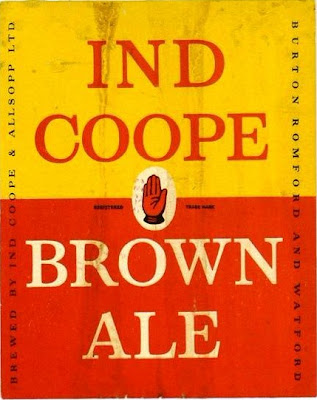It's not like that inside. There, its industrial purpose (and construction) are obvious. Even without all the shiny stainless steel that defines modern brewing kit. As I've said before, the new generation of breweries are similar across the world, with their conicals stretching to the ceiling.
Last week me and Andrew accompanied Dann and Martha there for a brewday. A very special brewday. One I've waited long for. Finally, finally, I'd persuaded someone to brew a William Younger's recipe. And not just any old beer. Younger's No. 1, the definition of a Scottish Strong Ale. Or Strong Scotch Ale. Whatever you care to call it.
There was another brewer along for the day. Jeff Biegert, from New Belgium, a brewing buddy of Dann's from way back. There was a special reason he came along. A reason closely connected with the beer itself. And something typical of Younger.
Scottish brewers were never big users of sugar, but there was one adjunct they embraced wholeheartedly: maize. Mostly in the form of grits. And what do grits mean? A cereal mash.
 "You can use flaked maize if you want, Dann." I told him, expecting him not wanting to fiddle around with a cereal mash. Not only didn't he mind, he positively wanted to give it a go.
"You can use flaked maize if you want, Dann." I told him, expecting him not wanting to fiddle around with a cereal mash. Not only didn't he mind, he positively wanted to give it a go."I've only done one once, years ago. I'd like to give it another try."
It turns out that Dann's one cereal mashing experience had been shared with Jeff. So he decided to invite him down for the brewday.
Maybe it was partly for the help. Help carrying sacks of grits up to the brewing stage. Oh no. Memories of Beau's and the sack upon sack of oats the poor brewers had to lug up to the mash tun surged back up the drainpipe of my mind. I really should try to pick more brewer-friendly recipes.
The malt was mashed first. That safely done, it was time for the cereal mash.
Once all the grits were in the Lauter tun and mixed with hot water, the anxiety began. Would the grits convert. We kept taking out a little and tasting it, to see if it was turning sweet. I can see why they're called grits. They've got a very gritty texture, especially at the start of the process. Little seemed to be happening at first, and Dann became ever more nervous. After a few samples we wondered: is it getting sweeter? Is it converting?
No need to fret. The mash sweetened and it was obvious there were no problems with conversion. Not that I'd been worried. Then again, it wasn't my money on the line. Or about to be poured down the drain. The wort from the grits was pumped over to join the rest of the mash and we were done. Mashing, at least.
 Being there during brewing was handy. I could do my throwing in hops thing. But also me and Dann could discuss the hop additions, even as the boil was underway. We settled on 20 minutes for the last one. A slightly arbitrary decision, but one based on the practices of the period. (I haven't mentioned that yet, have I, the period? 1939. That's when the original beer was brewed.)
Being there during brewing was handy. I could do my throwing in hops thing. But also me and Dann could discuss the hop additions, even as the boil was underway. We settled on 20 minutes for the last one. A slightly arbitrary decision, but one based on the practices of the period. (I haven't mentioned that yet, have I, the period? 1939. That's when the original beer was brewed.)The hopping wasn't the end of my contribution. Though I know from analyses that No. 1 was a dark beer, the grist contained nothing darker than a little crystal malt. As brewed, the wort was a pale amber, way paler than the finished beer should be. I know how they got the colour: caramel. Scottish brewers loved colouring up their beer with caramel. Dann added a little caramel at a time, and brought back samples for me to look at.
"Is this dark enough, Ron?"
"Naah, needs to be darker than that. Think Dark Mild."
"About the colour of Old Peculier?"
"That's the one."
Makes me feel much more deserving of my name in the credits, having made that contribution.
The 1939 Younger's No. 1 is currently bubbling away in a conical. I can't wait to try it.

























































































